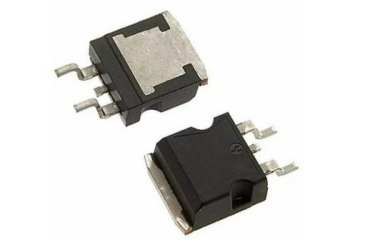
In the world of electronic components, MOSFETs (Metal-Oxide-Semiconductor Field-Effect Transistors) are among the most widely used switching devices. They are commonly found in power management, power conversion, and signal amplification circuits. However, many hardware engineers may overlook the presence and role of the MOSFET's internal body diode when designing circuits. This article dives into what MOSFET body diodes are all about.
Catalog
I. What is a MOSFET Body Diode?
II. Do All MOSFETs Have a Body Diode?
III. What Is the Purpose of the MOSFET Body Diode?
I. What is a MOSFET Body Diode?
First, let's define MOSFETs and body diodes. A MOSFET is a voltage-controlled semiconductor device that regulates current flow between the source and drain terminals through the gate voltage. It's often used for signal amplification, switching circuits, and power conversion.
The body diode, also called the intrinsic or parasitic diode, is a diode that naturally exists within the MOSFET structure. It's not an added component but forms inherently during the manufacturing process. Typically, it sits between the MOSFET's source and drain, created by the PN junction properties of the semiconductor material.
II. Do All MOSFETs Have a Body Diode?
Since the MOSFET was invented at Bell Labs in 1960, it has undergone multiple technological evolutions—from its basic structure to material innovations and process advancements—driving the progress of modern electronics. Here's a summary of key milestones:
· 1960: MOSFET invented with silicon-based structure, SiO₂ gate dielectric, starting the FET era.
· 1963: CMOS technology developed, laying the foundation for low-power digital ICs.
· 1970s: Power MOSFETs emerged, used for switching power supplies and motor drives, offering high input impedance and fast switching.
· 1977: VDMOS introduced, vertical structure reduced on-resistance, supporting higher currents.
· Early 1990s: Trench MOSFETs came out, trench-gate technology significantly lowered on-resistance and improved switching speed.
· 1998: Superjunction MOSFETs launched, alternating P/N structure broke the on-resistance vs. breakdown voltage trade-off.
· 2011: FinFETs mass-produced, 3D gate structure enhanced channel control, enabling nanoscale processes.
· 2010s: SiC/GaN MOSFETs developed, using new materials for high-frequency switching in high-temperature and high-voltage environments.
So, do all MOSFETs have a body diode? The answer is no—not all MOSFETs have one. Most common power MOSFETs, especially discrete devices, do include a body diode. This is because their planar or trench-based structures naturally form a PN junction between the source and the body region.
However, some specialized MOSFETs, like those in certain ICs or high-frequency devices, may be designed without a noticeable body diode or have it minimized through process optimization. For example, in some GaN MOSFETs or advanced CMOS technologies, the body diode may be suppressed or nearly absent to boost switching speed and efficiency.
Thus, hardware engineers should always check the datasheet to confirm a MOSFET's specific characteristics, avoiding unexpected issues in circuit design.
III. What Is the Purpose of the MOSFET Body Diode?
1. Reverse-Polarity Protection
For example, in back-to-back MOSFET topologies used for reverse-polarity protection, the body diode helps prevent damage when the supply is connected backward.
2. Reverse Current Path
The body diode provides a natural path for reverse current, which is very useful in certain bidirectional switching circuits. For instance, in H-bridge inverters or synchronous rectifiers, the body diode allows current to flow even when the MOSFET is off, enabling bidirectional current flow.
It's important to note that the body diode usually has a relatively high forward voltage drop, generally between 0.7V and 1.5V. Reverse conduction through the diode can result in significant power loss. Also, conventional MOSFET body diodes have relatively slow reverse recovery speeds, which can cause switching losses, reduced power efficiency, and increased electromagnetic interference (EMI) in high-frequency circuits.




